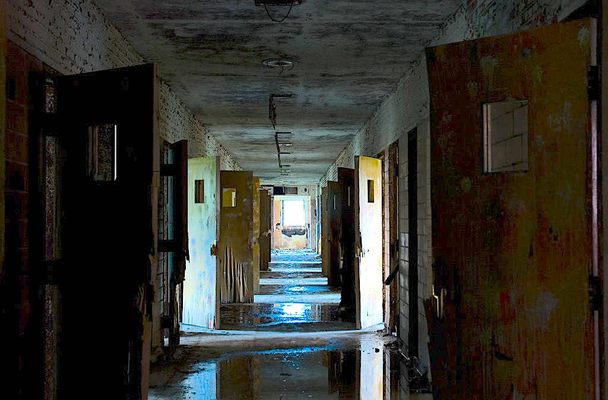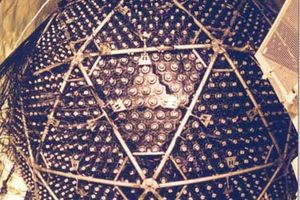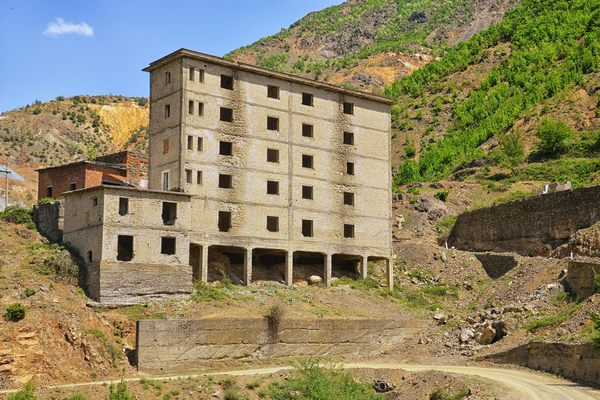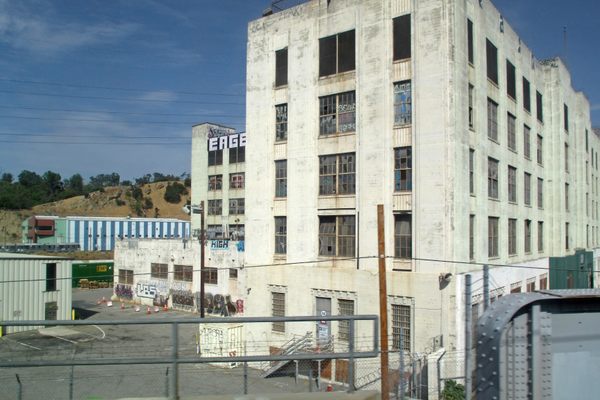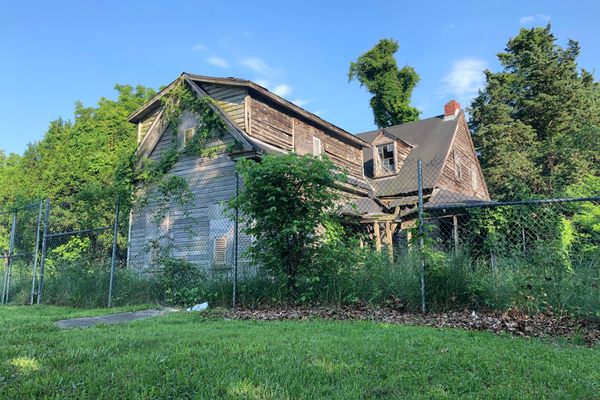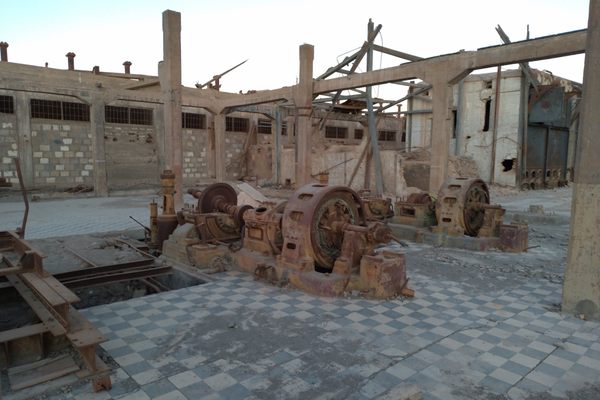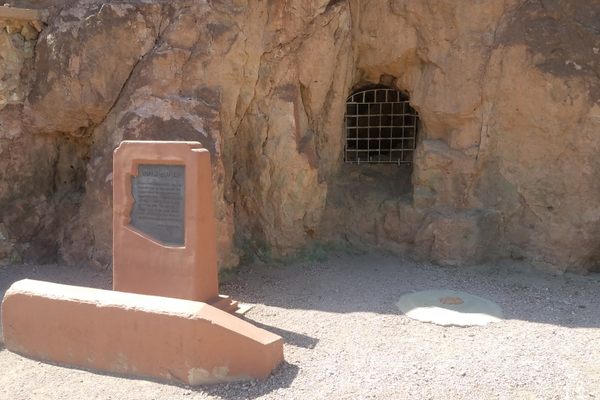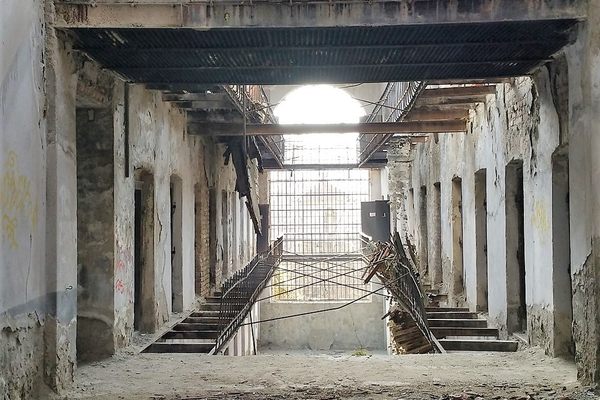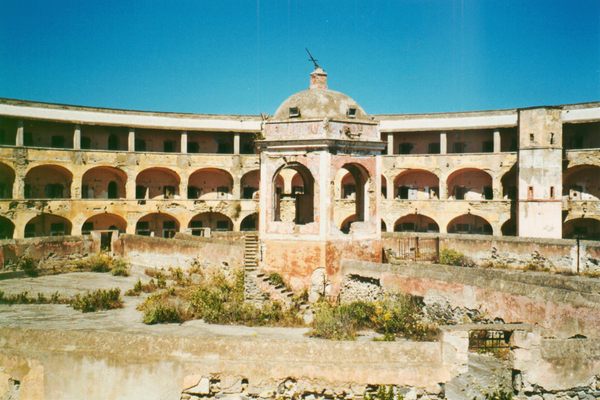About
Burwash Correctional Center was opened in 1914. Over the years, an entire community sprang up around it, built by inmates to house 1,000 or so residents who worked at the prison and its farm. But the prison was deemed too costly and was shuttered in 1975, leaving the red brick building to the elements (and a handful of adventurous visitors).
Today, the dilapidated halls of the correctional center are marked by peeling paint and graffiti, broken glass, and creeping weeds. Moss and rust and silence have long reclaimed this once-thriving prison and its surrounding community, now left to crumble in the frigid Ontario air.
Burwash once housed anywhere between 180 and 820 inmates. When the initially isolated prison became more accessible following the construction of Highway 69, an entire community of prison workers and support staff developed around the facility. The inmates built a church and a post office, a tailor shop, and a shoe repair shop. One inmate ran the local barbershop, sometimes shaving his own prison guards with a straight razor.
Fresh meat, fruit, and vegetables were grown by inmates on the prison farm, and the prisoners made bread to sell in the local grocery store. They felled trees for the local sawmill, and buildings were raised using this wood. Burwash became an almost entirely self-sufficient community, in which inmates could receive an education and learn a trade, while at the same time feeling part of a wider community, albeit with some obvious limitations.
Burwash only housed low-risk inmates serving sentences of up to two years. In an interview with The Sudbury Star in 2013, Dave Webb, a former corrections officer who worked at Burwash from 1957 until its closure, described the prison as a fair place for inmates: “Nobody was abused. If an inmate wanted to do good time he had a good time. If he wanted to make it difficult for the staff, it would be difficult."
A handful of inmates, he admitted, may have considered Burwash “a hellhole.” One such prisoner was the young David Clayton-Thomas, who would later go on to become the lead vocalist of the American band Blood, Sweat & Tears. In his 2010 autobiography, Clayton-Thomas wrote: "This was no summer camp… All conversation is forbidden and any attempt to communicate is punished by a high-pressure hose poked through the door slot and unleashed on the prisoner."
The opinions of guards, residents, and inmates were ultimately unimportant when, in July 1974, Ontario’s Minister of Correctional Services, Richard T. Potter, announced that the Burwash Correctional Center would close. The facility was deemed too expensive to run, and its closure would save the provincial government money.
So, in 1975, around a thousand residents in the town’s 175 houses were told they had to leave. The prisoners were relocated, and Ontario began to look at alternative uses for the remaining prison complex and the 35,000 acres of land on which it stood.
In the end, the Federal Government purchased the property for 1.8 million dollars. They then leased a portion of the land to the Regional Municipality of Sudbury for an angora goat farming project, which turned out to be a huge waste of money. In the '80s, the land was sold off to various enterprises. The Department of National Defense took a large chunk to use as a military training area. Some went to the Ministry of Natural Resources. The Ministry of Transportation also took over some gravel reserves on the land for road construction.
By the mid-1990s, nearly all the buildings at Burwash had been demolished. Left standing were the main prison complex (known as Camp Bison), as well as the prison cemetery, the last resting place of an estimated 12 to 20 prisoners who had no family to bury elsewhere. On August 6, 2006, the Ontario Heritage Trust unveiled a plaque at Burwash, a stamp of approval for its historic status. A year or so later, the cemetery was also cleaned up, and a signpost erected to mark its location.
Update as of 2020: This location now has a new owner. You can still go and explore this site for a small fee.
Related Tags
Know Before You Go
The Burwash Correctional Center is on private land and trespassers could be prosecuted. Legal access can be arranged, however, through a local company called Avalon Eco Resort - https://avalonecoresort.com/
There is a small parking area for your vehicle near the train tracks, within close proximity to the beginning of the 4.5km hike. Also of note is that the site is no longer accessible by car/SUV/etc, but is accessible by foot, bicycle and ATV.
Large portions of the hike is flooded over, and while ATVs can easily make their way through, hikers and bikers will need to use "alternative" pathways around.
Community Contributors
Added By
Published
April 12, 2018
Sources
- http://www.dailymail.co.uk/news/article-2597839/Inside-Canadas-ghost-prison-Haunting-pictures-shed-light-abandoned-century-old-Burwash-Correctional-Centre.html
- http://www.midnorthmonitor.com/2016/03/17/no-trespassing-burwash-correctional-centre-off-limits
- http://www.thesudburystar.com/2013/03/30/accent-memories-of-burwash-prison
- https://www.abandonedplacescanada.com/Burwash-Industrial-Prison-abandoned-Ontario_location16801.html
